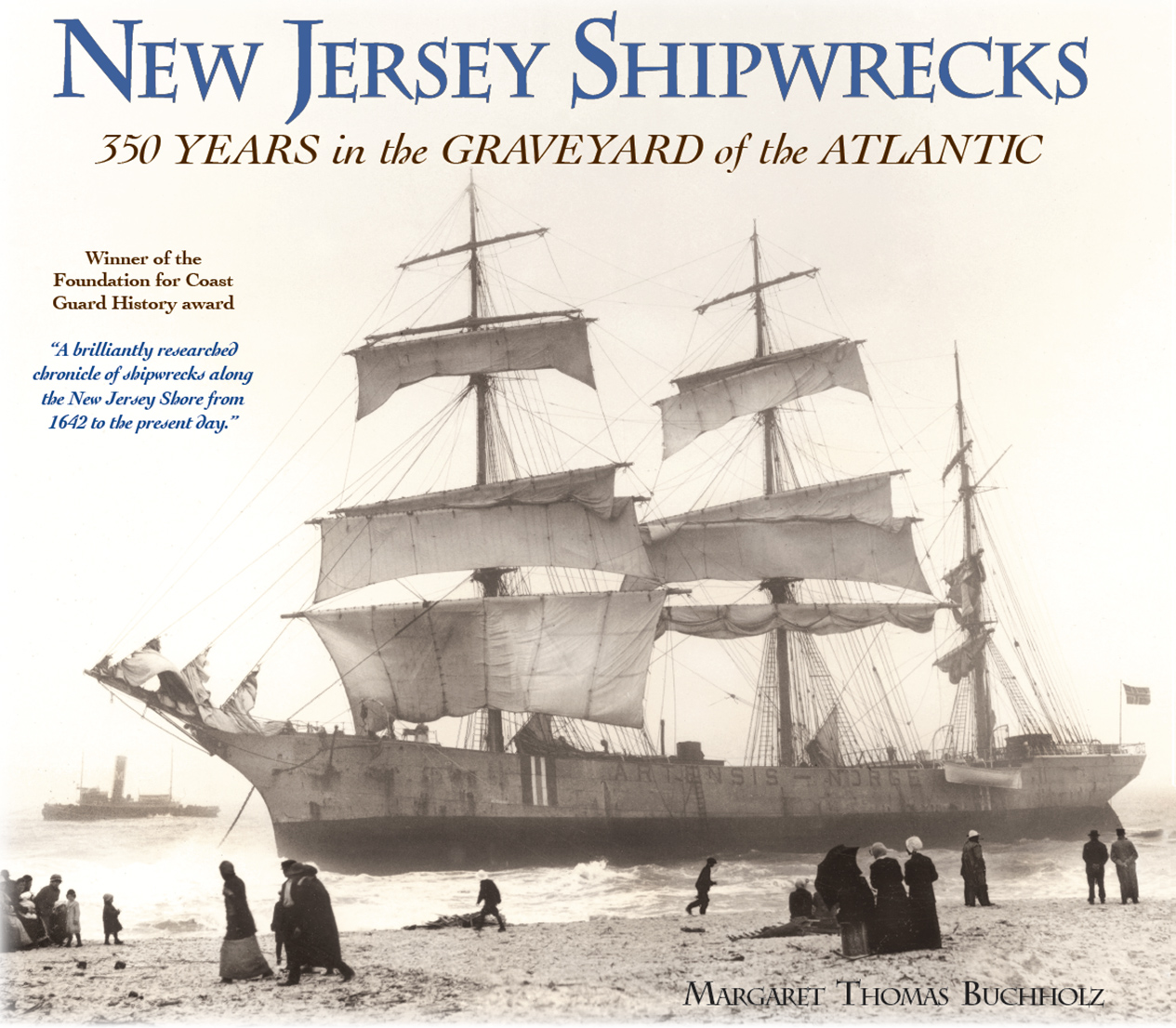|
|
|||||||||||||||||||||||||||||
|
"A gripping and informative account of what appears to be America’s deadliest coastline. After reading New Jersey Shipwrecks, you’ll never look at the Jersey Shore as before. Thank God for modern engines and GPS. A great read." — W. Hodding Carter, author of A Viking Voyage and Stolen Water: Saving the Everglades from its Friends, Foes and Florida |
|||||||||||||||||||||||||||||
 |
|||||||||||||||||||||||||||||
|
|||||||||||||||||||||||||||||
|
$26.95 softcover ISBN 978-1-59322-050-1 |
|||||||||||||||||||||||||||||
|
|
|||||||||||||||||||||||||||||
|
1848 to 1861
A Matter of Conscience
The staggering number of reported shipwrecks over the centuries — about 5000 including both documented and undocumented — has earned New Jersey waters the sorrowful epithet, "Graveyard of the Atlantic." The configuration of the land contributed to the many wrecks that led to building the first lifesaving stations here. Imagine a cone with New York City its apex, Long Island on one side, and New Jersey on the other. Only 6 miles separated Sandy Hook and Coney Island, and before the Swash and Ambrose Channels were dug and maintained, the constantly shifting shoals in the harbor approach made getting in safely a gamble in the best of weather. During a storm, unless a skipper could beat to windward, any northeast gale would blow an inbound sailing vessel onto the lee shore – the Jersey shore. Sandbars parallel the coast from 200 to 400 yards offshore, with depths as little as 3 feet at low tide. The American Coast Pilot in 1800 warned mariners about the shoal at Barnegat Inlet, saying: "It does not extend beyond three miles from the beach and is very steep too. You may turn this shoal in six fathoms of water within pistol shot of the outward breakers."
If a ship grounded on any of the offshore shoals and didn’t break up, but was blown over it and stranded near enough to shore for the crew to swim in – if the water was warm enough to avoid hypothermia – what awaited the men on the beach? On the barrier islands south of Manasquan Inlet the dunes rose to 20 feet and behind them was a dense growth of bayberry, sumac, cedar, scrub pine, sea oats, and beach plum, with a tidal marsh beyond that. And perhaps an occasional fishing or gunning shack, but no villages. When Newell introduced his lifesaving bill, the Second District coast was almost totally unpopulated; most people farmed inland. Tuckerton was a thriving port at the southern end; Manahawkin, Waretown and Toms River were small villages; Point Pleasant had a few boarding houses and Long Branch had boarding houses and five new hotels. But the roughly 57 miles of shoreline between Long Branch and Little Egg Harbor Inlet had no villages except for Squan. With the exception of a small settlement on Absecon Island — which wouldn’t become Atlantic City until 1854 — the situation south to Cape May was equally bleak. A stranded mariner could walk for 10 miles in either direction — if he had the strength left — and not find even a fisherman’s hut for shelter. Only if the ship could be seen from the mainland might help come. The first stations were Sandy Hook (located at Spermaceti Cove, and the first to be built), Long Branch (Monmouth Beach), Deal Beach, Shark River, Squan (Chadwicks), Six Mile Beach (Island Beach), Harvey Cedars, and Long Beach (Bonds/Beach Haven), all completed by May 1849. A year later Brigantine, Absecon (Atlantic City), Great Egg Harbor, Ludlam’s Beach (Townsends Inlet), Five Mile Beach (Hereford Inlet), and Cape May Point were built. Ten more stations were added in 1854: Bay Head, Toms River, Forked River, Barnegat, Ship Bottom, Little Egg Harbor, Corsons Inlet, Tatham’s, Turtle Gut, and Cold Spring. The men placed in charge of each lifesaving station were the most experienced surfmen, several of them wreckmasters of their districts, but most serving as volunteers. It wasn’t until 1854 that the government appropriated money for the keepers’ salaries, and 1857 until they actually received the $200 yearly stipend. Four years later, Congress authorized another $26,440 for 28 of the "best self-righting lifeboats." |
|||||||||||||||||||||||||||||
|
Excerpt from New Jersey Shipwrecks
© 2004 Margaret Thomas Buchholz. All rights reserved. |
|||||||||||||||||||||||||||||
 |
|||||||||||||||||||||||||||||
|
Spermaceti Cove Lifesaving Station was the first government station. It was built in 1848 at Sandy Hook.
|
|||||||||||||||||||||||||||||
|
|||||||||||||||||||||||||||||